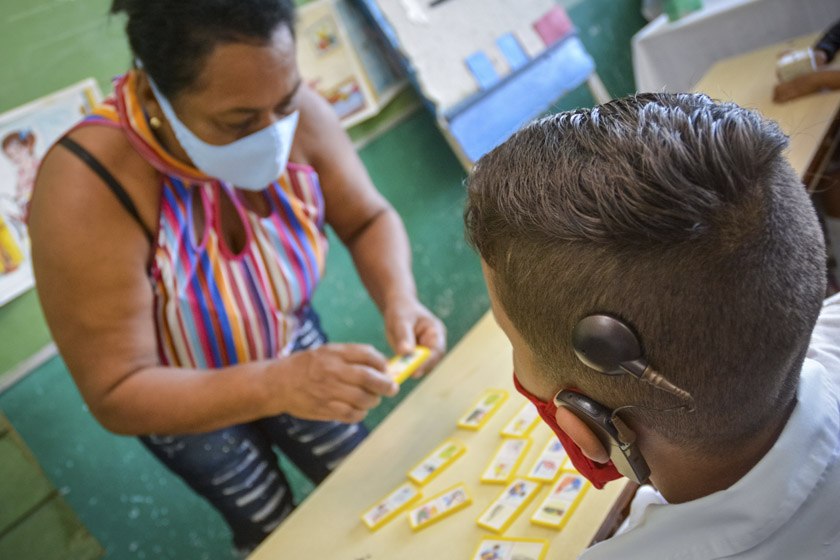
Special Education staff in Las Tunas, and Cuba, work with the patience of those who cultivate and wait for the necessary time to see the fruit of their action.
Las Tunas, Cuba.- This system, which was born with the Revolution and has love as its center and distinctive sign at every step, is backed by 61 years of work. Every class in this teaching implies a pedagogy of tenderness in its deepest sense.
So says Yolanda Migüel Barrios, who retired see ven years ago and now works as an itinerant teacher. "It is a very nice job, because they are children who need a lot of love and who do learn, although this process is slower and, when it is achieved, the joy of the family is immense and shared by all", she said recently to the local television station TunasVisión.
Odalys Méndez Alarcón expressed herself in similar terms when she visited her classroom and could see how much she enjoys sharing every moment with her students at the Jorge Aleaga Peña special school: "I enjoy teaching children with Down syndrome and more than a teacher I feel like a mother. You have to put all your love into working with them and it's not easy, but it's not impossible either.
"All those who have passed through here identify colors, geometric figures, locate themselves in space..., in addition, they like songs, stories, puppets, they grasp all these activities and learn, more slowly, but they learn."
In the province, more than 1,300 schoolchildren are enrolled in this system, one of the pillars of the Cuban educational project, which is developed in 15 facilities where students with sensory impairments (hearing and visual), intellectual disabilities, and physical-motor problems, among other situations, are attended.
The Ramón Téllez Peña special school, which takes in children from early childhood through sixth grade, stands out in this regard. There, a group of more than a hundred workers offers permanent attention to each child, who also benefits from the expertise of sign language interpreters, speech therapists, psych-pedagogues, and support teachers for counseling.
Before the revolutionary triumph, on January 1, 1959, there were only eight schools in Cuba dedicated to this area of education, then with only 20 teachers attending to 100 children. Today, there are more than 300 schools of this type and an enrollment of more than 32,000 students and 14,000 teachers.
Because of the Revolution, this system of institutions, services, and modalities of attention represents essential support for people with special educational needs, their families, the community, and society as a whole.